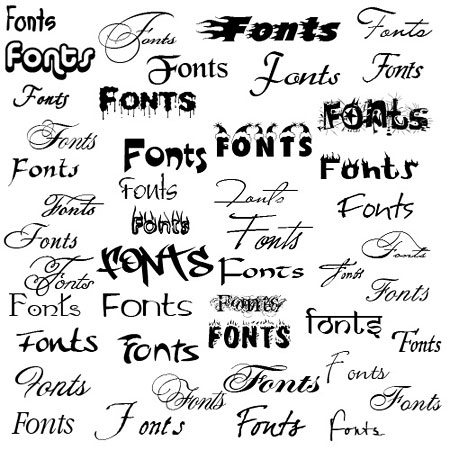Over the past few years, I have been seeing minimalist and handwritten fonts lose a lot of their popularity. Especially with large brands.
This shouldn’t be a huge surprise to people who have been paying attention to the design world lately.
Last year I predicted that bold brand fonts, like in the Samsung ad below, would be very popular going forward. Especially as the design world continues to buck some of the previous graphic design trends.

But this year things are getting bolder, with heavily weighted fonts being used a lot more frequently.
There are a ton of weights for fonts, ranging from thin to regular to bold, with a few steps in between each as well.

Heavy fonts are usually a bold or extra bold font–which gives them a “heavy” appearance. These types of fonts can give your designs a modern and contemporary feel.
For example, take a look at the header font in the infographic below:
I like heavy fonts because you can use them to create a ton of contrast in your graphics. Adobe used a heavy font extremely well in this exact manner below:

The strong modern fonts contrast with the cute dog pictures. I do think that contrast is what makes this graphic so interesting and powerful.

They also used a lot of reserved and muted colors as you can see above.
Try to only use these heavy fonts when you only have a short bit of text or as a header, like above. Otherwise, it will make your graphic pretty hard on the eyes of the reader.
See how Chainalysis uses the bold font only for their header, and then a regular font for the paragraph text:

SMLXL only uses their extra heavy font for short phrases or ideas:

This measured use of bold text not only directs the reader to where they should look first, it also doesn’t overwhelm them with heavy fonts.
They can also become the main focal points of a graphic as well. Especially on social media, where you want to get your message across quickly and efficiently.
In these examples from Hootsuite, there isn’t much to the graphic, but the bold font still catches your eye:

Usually, the font or title of a social media image like this isn’t the main focal point of a graphic. But in these examples, they are the star of the show.
If the designers would have gone with a thin or light font, readers probably would have scrolled right past it.
As you can see, these heavy fonts can make short phrases feel a lot more powerful. In each of the examples above, the small bit of text feels large and impressive. With another type of font, the feeling wouldn’t be the same at all.
You can match the heavy fonts with a powerful or inspiring message for double the impact:

Now, I know that most of the examples above have all been sans-serif but not all heavy fonts have to be. It just happens to be a lot easier to increase the weight of a sans-serif font because of the, well, lack of serifs.
That said, the team at Acoustic have used some amazing heavy serif fonts in their graphics lately:

Just remember, when using any kind of heavy or bold font, don’t overuse it. A heavy font will have more impact when contrasted against a more neutral background.

